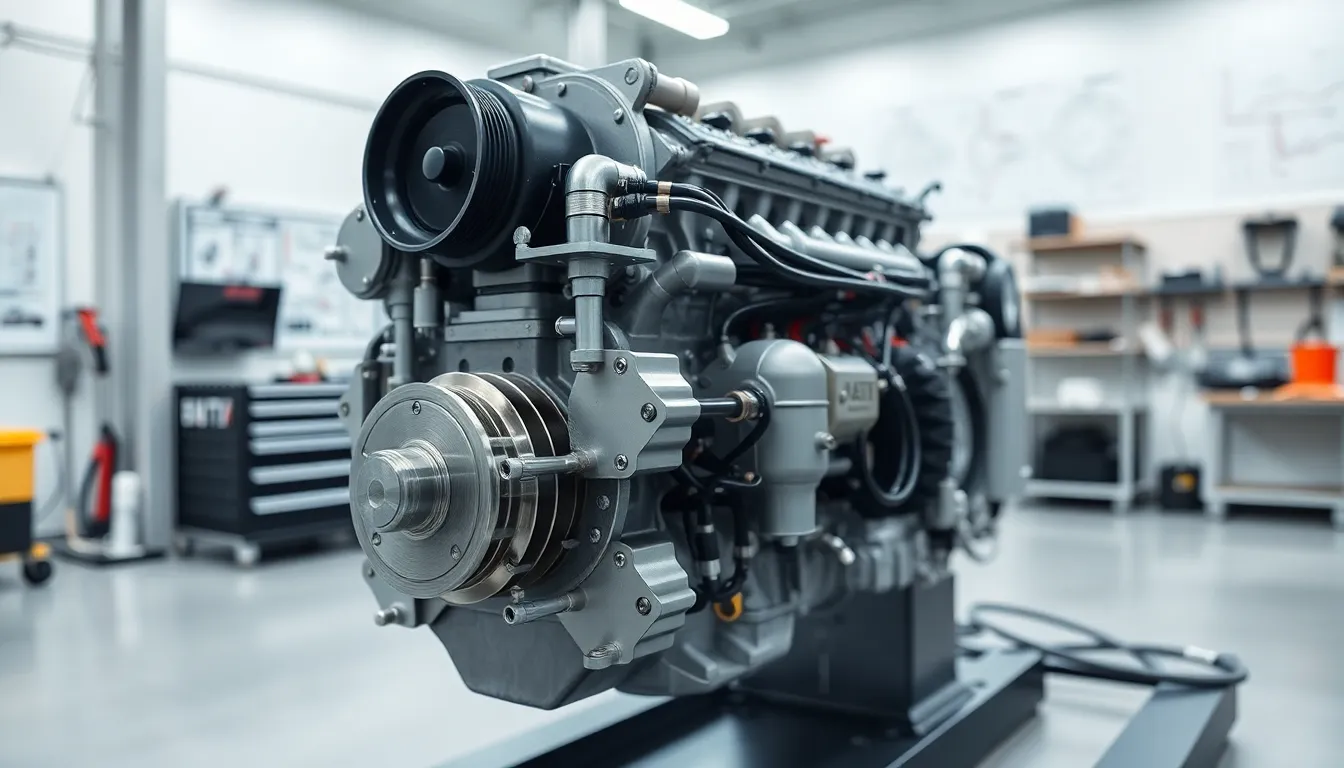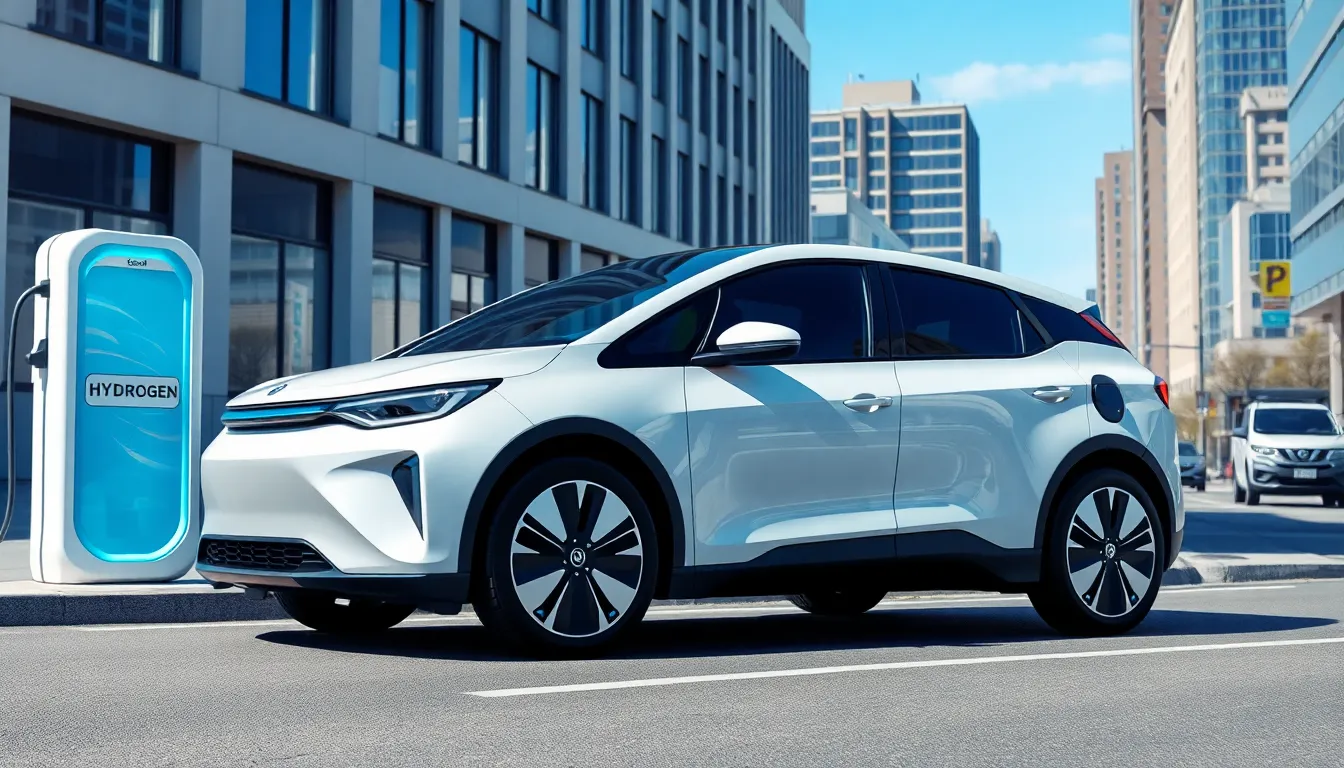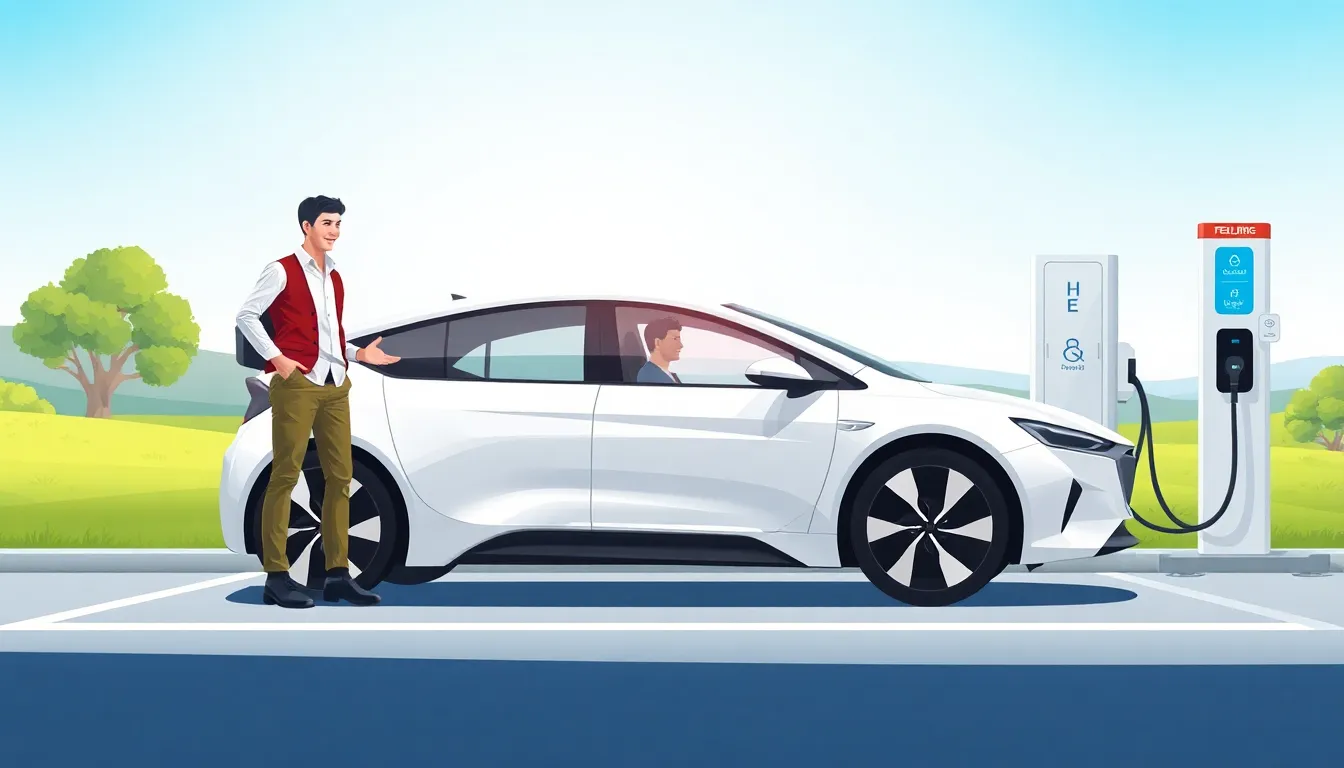In a world where gas prices seem to rise faster than a rocket, hydrogen fuel cell vehicles are stepping in like the superhero we didn’t know we needed. Imagine cruising down the highway, powered by the very element that makes up 75% of the universe, all while emitting nothing but water vapor. It’s like driving a car that’s on a perpetual spa day!
Table of Contents
ToggleOverview of Hydrogen Fuel Cell Vehicles
Hydrogen fuel cell vehicles (FCVs) represent an innovative approach to sustainable transportation. Powered by hydrogen, these vehicles utilize electrochemical reactions to convert hydrogen into electricity, which drives an electric motor. Emissions from this process consist solely of water vapor, making them environmentally friendly options.
Fuel cell technology operates efficiently. The efficiency of hydrogen fuel cells ranges from 40% to 60%, significantly higher than internal combustion engines. This efficiency translates to improved energy consumption and lower operational costs.
Refueling a hydrogen vehicle takes about five minutes, comparable to conventional gasoline refueling times. With advancements in infrastructure, more hydrogen refueling stations are becoming available. As of 2023, over 50 stations exist in California alone.
Driving range is another advantage. Many hydrogen fuel cell vehicles can achieve ranges of 300 miles or more on a single tank. This aspect makes them suitable for long-distance travel as well.
Leading automobile manufacturers are investing in this technology. Companies such as Toyota and Hyundai have already released successful models like the Toyota Mirai and Hyundai NEXO. Their current production showcases the commitment to hydrogen as a viable fuel source.
Financial incentives also promote the adoption of hydrogen fuel cell vehicles. Various states provide rebates and tax credits for purchasing FCVs. These incentives can significantly reduce the overall cost of ownership.
Market trends indicate a growing interest in hydrogen fuel cell technology. Increased attention aligns with global efforts toward reducing carbon footprints and enhancing sustainable transportation solutions.
How Hydrogen Fuel Cells Work


Hydrogen fuel cells operate through a straightforward process that transforms hydrogen into electricity.
The Science Behind Fuel Cells
Fuel cells generate electricity via an electrochemical reaction between hydrogen and oxygen. Inside the fuel cell, hydrogen molecules split into protons and electrons. Protons move through a membrane, while electrons travel through an external circuit, creating an electric current. This reaction produces only water vapor and heat as byproducts, emphasizing the clean nature of the technology. Efficiency rates for hydrogen fuel cells fall between 40% and 60%, showcasing their superior performance compared to traditional combustion engines. Moreover, researchers continuously work on innovations to enhance these efficiency levels, aiming to make fuel cells even more viable for everyday use.
The Role of Hydrogen
Hydrogen serves as the primary fuel for fuel cells and is abundant in the universe. Its extraction, however, primarily occurs through processes like natural gas reforming and electrolysis of water. The latter splits water into hydrogen and oxygen using electricity, making it increasingly relevant to renewable energy sources. Once produced, hydrogen stores energy efficiently and releases it through the fuel cell process. This release of energy powers electric motors in vehicles, offering a range comparable to gasoline-powered alternatives. Furthermore, the clean emissions of hydrogen encourage a shift towards sustainable transport solutions, aligning with global decarbonization efforts.
Advantages of Hydrogen Fuel Cell Vehicles
Hydrogen fuel cell vehicles (FCVs) offer numerous advantages that make them an attractive option for modern transportation. Their benefits span environmental, economic, and performance aspects.
Environmental Benefits
FCVs produce zero tailpipe emissions, releasing only water vapor. This clean output significantly reduces air pollution and greenhouse gas emissions, contributing to a healthier atmosphere. As hydrogen can be generated from renewable sources like wind and solar energy, its use supports sustainable practices. Utilizing hydrogen as a primary fuel aids in decreasing dependency on fossil fuels. Transitioning to FCVs aligns with global targets for reducing carbon footprints.
Economic Considerations
Investing in hydrogen fuel cell technology leads to substantial long-term savings. Operating costs for FCVs are generally lower than those of traditional vehicles, thanks to higher efficiency rates between 40% and 60%. Multiple states offer financial incentives, such as tax credits and rebates, enhancing the affordability of FCVs. Additionally, refueling costs remain competitive with gasoline prices, encouraging mass adoption. As fuel cell infrastructure expands, the economic viability of FCVs strengthens, fostering a shift towards cleaner transportation solutions.
Challenges Facing Hydrogen Fuel Cell Vehicles
Hydrogen fuel cell vehicles encounter several challenges that affect their widespread adoption. Two primary obstacles include infrastructure limitations and technological barriers.
Infrastructure Limitations
Limited refueling infrastructure presents a significant challenge for hydrogen fuel cell vehicles. As of 2023, California has over 50 hydrogen refueling stations, but this network falls short in many regions. Drivers often face difficulties finding accessible refueling options, making long-distance travel less feasible. This lack of infrastructure directly impacts consumer confidence in adopting FCVs. Furthermore, developing hydrogen stations requires substantial investment and coordination among stakeholders, complicating the expansion process. As a result, without a robust refueling network, the growth of hydrogen fuel cell vehicles remains constrained.
Technological Barriers
Technological barriers hinder the advancement and efficiency of hydrogen fuel cell vehicles. While current fuel cell technologies operate with 40% to 60% efficiency, further innovation is necessary for improved performance. Innovations in materials and processes could enhance fuel cell durability and decrease costs. Excessive production costs of hydrogen fuel, primarily derived from natural gas reforming or electrolysis, affect overall vehicle pricing. Additionally, storage and transportation of hydrogen present safety and efficiency challenges. Addressing these technological hurdles is crucial for making hydrogen fuel cell vehicles more viable for everyday use and expanding their market presence.
Future of Hydrogen Fuel Cell Vehicles
The future of hydrogen fuel cell vehicles holds immense potential for transportation and environmental sustainability. As technological advancements unfold, innovations are expected to reshape the landscape of FCVs.
Innovations on the Horizon
Fuel cell efficiency improvements are one focus of ongoing research. Companies are developing new materials and designs to enhance energy output. Efforts also emphasize hydrogen production through greener methods like electrolysis, which generates hydrogen using renewable energy sources. Additionally, advancements in storage technology promise to increase the range and affordability of hydrogen FCVs. Automakers are exploring lightweight composites and innovative drivetrains to boost vehicle performance further. Collectively, these innovations pave the way for wider adoption and the establishment of hydrogen FCVs as a mainstream choice.
Market Trends and Adoption
Market dynamics indicate a growing interest in hydrogen fuel cell technology. A surge in investments from leading manufacturers demonstrates confidence in the sector. Various governments offer financial incentives, including rebates that encourage consumers to consider FCVs. In 2023, California reported over 50 hydrogen refueling stations, contributing to stronger infrastructure. Notably, a shift toward sustainable transportation aligns with global decarbonization efforts. Growth in the electric vehicle market adds to the momentum, showcasing hydrogen as a viable alternative. As the industry evolves, both consumers and manufacturers can expect more options, driving larger-scale adoption of hydrogen fuel cell vehicles.





